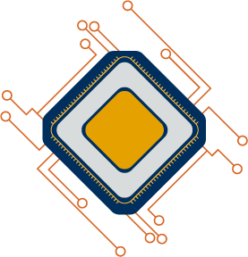This chapter takes a look at a simulation model (and equations) and what role such a model can play in patenting. Simulation models are relevant, for example, in the case of digital twins. The information is based on the Enlarged Board of Appeal decision G1/19, points 106 to 111.
Model and equations are mathematical
A model and the equations representing the model are mathematical – regardless of whether a “technical” or “non-technical” system or process is modelled.
One example in the latter category could be a model based on game theory.
Establishing the model and the equations is a purely mental act, even though these activities might be supported by computers, for example in the course of establishing a spatial grid adapted to a mechanical system to be simulated.
A simulation represents “reality” at least to a certain extent
If an existing system or process is to be simulated, a model should represent physical reality in such a way that, over the relevant ranges, the simulation based on it represents “reality” at least to a certain extent. It may turn out that a high level of precision and a consideration of all the applicable laws of nature are not required. Thus, for the simulation of an object’s flight trajectory, aerodynamic drag effects may be neglected where the simulation concerns the fall of a stone from a tower, but may have to be taken into account where it concerns the trajectory of the shuttlecock in a badminton game. Relativistic effects may be neglected in the context of the speed of road vehicles, but they may be important in the context of satellite navigation. Physical reality can never be represented exactly.
Model of a system or process is based on assumptions
A model of a system or process is based on assumptions which, depending on the relevant principles, may be difficult to verify. Whereas the laws of physics are usually well known, dependencies and parameters required for a model may be more difficult to establish if human factors or random events come into play.
The claims of the application underlying the referral of G1/19, for example, include parameters such as “personal space”, “dissatisfaction function” and “frustration function”, which can be quantified and built into a model only on the basis of assumptions which may need substantial adaptation in the course of the development of a simulation.
It is irrelevant whether the system or process has ever existed or will ever exist
It may be debated whether a non-existing system or process may be “modelled” or “simulated” at all. However, for the purposes of establishing a model and formalising it through equations, it is irrelevant whether the system or process has ever existed or will ever exist. Simulating systems which are as yet unrealised improvements of a known system or even simulating dynamic processes which do not occur or which should actually be avoided in the physical world, appear to be significant applications of simulations (see e.g. T 625/11 – establishing a limit value for an operational parameter of a nuclear reactor). A simulation may allow investigation of a system without the need to build the system (see T 1227/05).
Models may contribute to technicality
Following the COMVIK approach, models underlying a simulation form constraints (technical or not) which are not technical for the purposes of the simulation itself. However, they may contribute to technicality if they are, for example, a reason for adapting the computer or the way in which the computer operates, or if they contribute to technical effects relating to the results of the simulation.
According to the opinion of the author of this chapter the "results of the simulation" could be functional data as considered in chapter (9) "Potential technical effects". This data can therefore be a technical feature. This data in combination with the non technical model can lead to a further technical effect. Or, if the model adapts the computer in a way, that a further technical effect is achieved the model could be considered as a technical means.
Technicality of the simulation does not depend on the quality of the underlying model
Whether a simulation contributes to the technical character of the claimed subject-matter does not depend on the quality of the underlying model or the degree to which the simulation represents “reality”.
However, the accuracy of a simulation is a factor that may have an influence on a technical effect going beyond the simulation’s implementation and may therefore be taken into consideration in the assessment under Article 56 EPC.
For the purposes of Article 56 EPC, it can be that an alleged improvement is not achieved if the simulation is not accurate enough for its intended (technical) purpose, and the claimed simulation process may be considered non-inventive as a consequence even if the simulation contributes to the technical character of the invention.
Conversely, a technical effect may still be achieved by a method involving numerical simulations if certain simulation parameters are inaccurate. If an improvement or a specific function is reflected in the claim and cannot be achieved by means of a simulation that does not reflect “reality” accurately enough, objections may also arise under Article 83 EPC if the skilled person is unable to find the necessary models and equations without undue burden.
